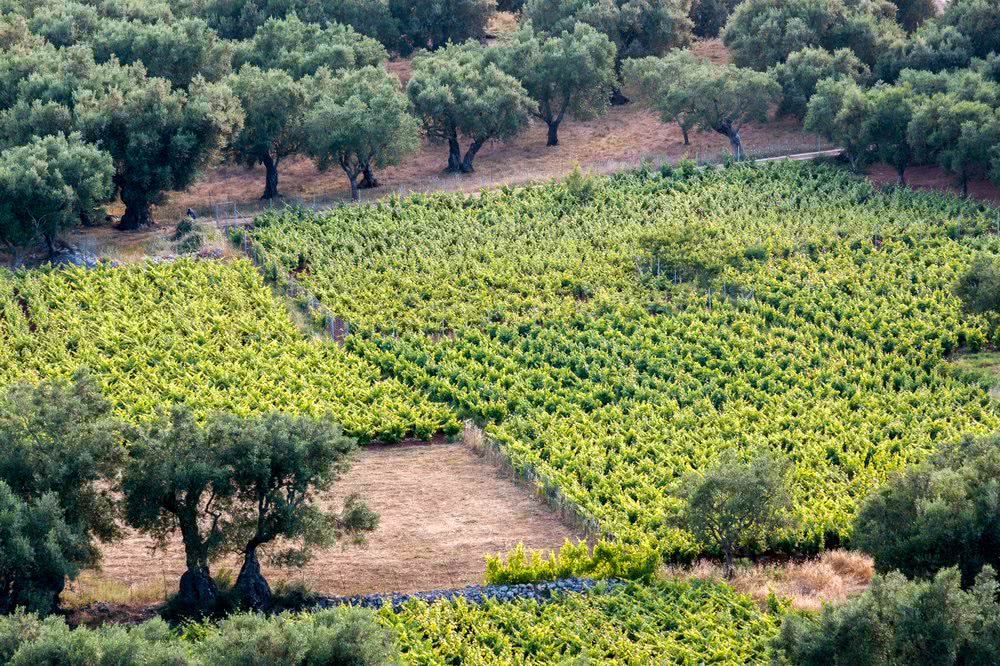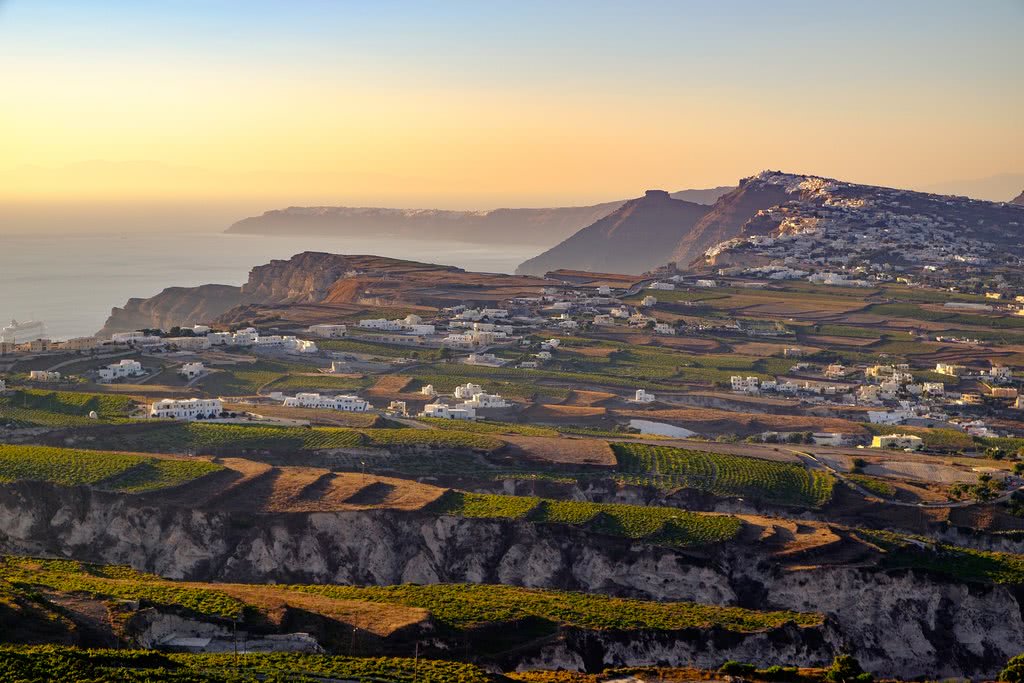Greek wine is the next big thing. This is why.
Recently there is a lot of noise about Greek wine being the next big thing. Well, it’s definitely on a serious rise, and probably it is.
Before analyzing further, let’s take a look at some of the major facts.
- The Greeks started making wine in 2.500 BC. That’s not necessarily a good thing, but for what it counts, it’s an early start.
- There are more than 300 indigenous Greek varietals to choose from. More than 70 are used for winemaking and have proven themselves to do some really good wine stuff.
- Climate ranges widely, from Mediterranean to Continental with the sea breeze playing a major role in providing healthy and interesting conditions for viticulture
History of Greek Wine
You guessed right. Like almost everything in Greece, wine making goes a really long way back with the first traces of wine dating during 2.500 BC. And just to give you an idea of how seriously ancient Greeks took their wine, they even had Dionysus, a god fully dedicated to wine. Feasts of gigantic proportions were organized with lots of wine and food, to celebrate Dionysus. The Greek wine god appeared to be a fat, happy dude with bunches of grapes around his head and he was one of favorites among Gods.
The oldest wine press to ever be found, was discovered in the ruins of Vathypetro a village near Heraklion, in Crete. Historians estimate that this wine press dates back to 2.500 BC during the Minoan civilization era and it’s the oldest wine press in the world.
Following the Minoan era, came the Mycenaean era, when Greek wine was used as a basic commodity and was transferred all over the known ancient world. It’s interesting how it was transferred though. They used to put the wine in amphorae and then they sealed the lid with pine raisin. Retsina was the unfortunate result of this procedure. When some of the amphorae were returned to Greece, Greeks liked the aromatic character from the contact with the raisin.
Another interesting fact is that ancient Greeks always drunk their wine diluted in water and by that they were distinguished from the so called “barbarians” that took their wine straight. They put the wine in ceramic vase called kratiras and they diluted it with water. Kratiras name derived from the word krasis and nowadays “krasi” in Greek means wine! The reason that ancient Greeks diluted their wine is that they wanted to drink all night during their symposiums (feasts) but not to get drunk. They wanted to talk about philosophy and other cool stuff and not to get wasted like barbarians did!
Finally, there were found ancient prescriptions of the father of medicine, Hippocrates that shown how important and sacred wine was for the Greeks. In these prescriptions, Hippocrates advised his patients to take a tablespoon of wine as a remedy, every day.

Greek Wine: History drawbacks
Well, Greek History has been an interesting one. And it certainly had its effect on Greek wine. The Islamic alcohol prohibition slowed things down during the 4 centuries of the Ottoman occupation and along with the heavy taxation, almost killed Greek winemaking.
Until the end of the 70s, Greek wine was all about Retsina and some really bad semi-sweet reds. And by Retsina I mean the worst kind of it, with tons of pine raisin covering up any wine flaws (and there were many). Greek wine exports worked well for mediocre wines on a budget, with a couple of mass production wine “factories” controlling the market totally. Those times are past gone.
New era for Greek wine
Things started changing in the 80s. Young (at the time) and talented oenologists started investing on Greek indigenous varietals (remember there are more than 300) and even revived some of them that were considered to be extinct.
Greek winemakers had their kids study oenology in some of the worlds renowned universities. Some of them even worked for some of the big international wineries and when they returned, bringing back new winemaking techniques and technology, the results were astounding. Single varietal or blended, some of the indigenous Greek varietals proved to be generous in giving wines that would take the world by surprise.
During that new era for Greek wine, Greek winemakers dedicate themselves to the indigenous grape varieties like Xinomavro and Assystiko. Surprisingly the wine world was bored of Cabernet and Sauvignon and the Greek varieties have slowly started to win over the international market.

Climate in Greece
The climate of Greece is considered to be Mediterranean with mild winters and hot, sunny summers. On the northern part of Greece, the climate is slightly continental with colder and more rainy winters, with fog and snow from time to time. The summers on the other hand are hotter and drier. The islands of Greece have mild and dry winters but super-hot and windy summers.
If you look closely you can see that there is a climate diversity from a Greek wine region to another. Additionally, in Greece there are many mountainous wine regions with high altitude that helps to the maintenance of the high acidity and the crisp character of the wines. The key element for Greek wines is the cool sea breeze from Aegean or Ionian Sea. During summer this cool breeze is really helping the wines maintain a cooler temperature.
Basic Greek wine varietals
The impressive fact is that there are more than 300 indigenous grape varieties in Greece. More than 70 of them are vinified with extraordinary results. The beautiful island of Santorini, known for its infamous sunsets, is home to Assyrtiko. The volcanic soils of the island and the extended sun exposure give a crisp, bone-dry white wine with citrusy and wildly mineral character that will take you by surprise. Assyrtiko is one of the Greek grape varieties that is cultivated abroad. Specifically, Assyrtiko stole the heart of Peter Barry and is now cultivated in Australia, in the vineyards of Jim Barry Winery.
The Xinomavro is the king of the north. Its name means bitter and sour, which admittedly doesn’t sound promising. Its wines though, are amazingly complex and intense with subtle aromas of sundried tomato, olive paste and red fruits. If you haven’t tried xinomavro until now, boy are you in for a treat!
Malagouzia on the other hand is the cinderella of Greek grape varieties. This aromatic grape was nearly extinct but with the help of Vangelis Gerovasileiou and Roxani Matsa, it is now one of the most popular grape varieties in Greece. With aromas of white flowers, mint, peach, lime and lemon, she became the princess she deserved to be.
If you are a fan of Sangiovese, then Agiorgitiko is the thing for you. It gives wines that are typically lush, velvety reds, with red-berry and black cherry flavors, spicy character and balanced acidity. They are known to age well for 5-10 years.
Mavrodaphne is an upcoming grape variety that has two homes, Patra and Cephalonia. It’s a deep coloured grape variety famous for the dessert wines it gives. The last 10-15 years many wine makers make dry red wines from Mavrodaphne. These wines have deep color, medium body and high acidity. They also have a distinctive spicy-peppery character and aromas of bay leaf, ink, coffee and black fruits.
Moschofilero is a super crisp grape variety from the slopes of Mantineia. Although it’s a blush variety it is well known for the white wines that it gives. White wines from Moschofilero are highly aromatic with notes of rose, Turkish delight and citrus. They have medium (-) body and high acidity.
Vidiano is Crete’s answer to Assyrtiko. This white variety has subtle aromas of apricot, bergamot, chamomile, white flowers and peach. It has very different style according to the altitude it’s cultivated. In high altitudes it has high acidity and minerality so many consider it’s a rival variety to Assyrtiko.
Limnio is one of the oldest grape varieties allover the world. Its origin is the Island of Lemnos, but it’s widely cultivated in Northern Greece. It’s a red grape variety with botanic character accompanied by aromas of red fruits.
Uprising grape varieties
Every year a new grape variety gets on the spotlight. We will present you a few of them just to make you aware of the all some Greek wines you can taste in the future. First, we have Robola from Cephalonia. Robola is a white grape variety with delicate aromatic character, slight mineral notes and medium to high acidity. Secondly there is Kydonitsa that with its perky personality has drawn Jancis Robinson attention. Finally we have Mavroudi, the variety that got even Cyclopes Polyphemus drunk according to Homer.
How do we know? Fortunately, it is our job to find the best wines from small, alternative Greek wine producers, before they go mainstream. Botilia.gr is one of the most successful and fastest growing startups in Greece. It is an online sales platform that helps users discover wines from smaller, artisanal Greek wine producers and buy them at winery’s prices. Our team of expert oenologists and sommeliers is curating the highest quality Greek wines, rejecting over 90 % of the wines tasted in the process.
Every week on www.botilia.gr you will find new wine propositions at great discounts, which can be delivered anywhere in the world. All wines are described precisely and for each one, our sommeliers recommend the best dishes to pair it with and provide recipes suggested by chefs and food bloggers for the perfect food pairing. There is an extended presentation of the wine producer himself, and believe us, there are many big stars on the rise!
